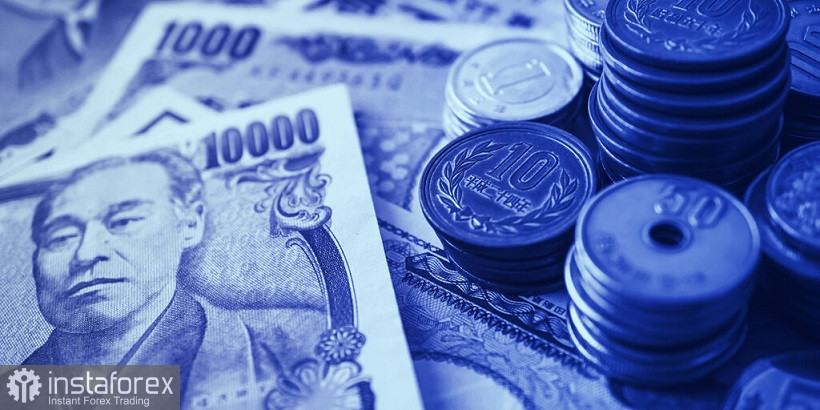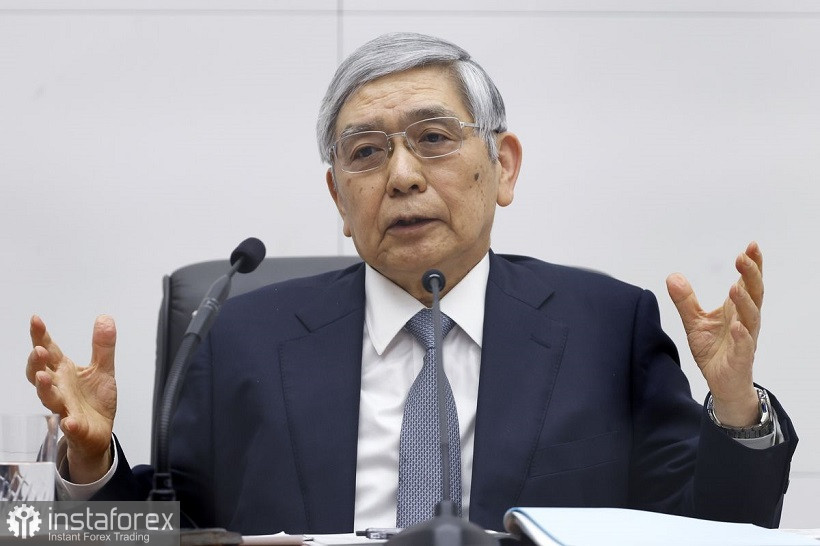Last week, the dollar-yen pair updated a multi-year price high, reaching 125.11. The pair was at this height for the last time almost seven years ago – in August 2015. Then the USD/JPY bulls failed to settle above the 125.00 mark. After several attempts, they gave up, after which the bears seized the initiative. Last week, the pair's bulls also failed to hold the height – traders began to take profits en masse, thereby putting pressure on the greenback. A rather deep (250-point) price pullback followed: the pair returned to the area of the 122nd figure.

Nevertheless, the upward trend is still in force. The corrective decline turned out to be impressive, but very short-term: this week, bulls went on the offensive again, storming the 124th figure at the moment. And judging by the growth rates, traders will be able to identify themselves at the borders of the 125th price level in the medium term. At least the fundamental picture is in favor of the growth scenario. The dollar is "on the horse" again and is gaining momentum again, due to the strengthening of anti-risk sentiment and hawkish expectations. The US dollar index is approaching the 100 mark (currently at two-year highs). Similar dynamics is demonstrated by the profitability of treasuries. In particular, the yield on 10-year government bonds has already reached three-year highs.
However, the USD/JPY pair is growing not only due to the strengthening of the greenback, but also due to the weakening of the yen. Such multidirectional movements push the pair up. The Japanese currency reacted to the rhetoric of the representatives of the central bank, who continue to take a dovish position, despite the signs of rising inflation in the country. So, a member of the Board of the Bank of Japan, Asahi Noguchi, recently said that the advantages of a weak yen for the Japanese economy "outweigh the disadvantages." In his opinion, the expensive national currency has "more painful consequences", in particular, in the form of deflation. By the way, similar statements were made by the Bank of Japan last year, when the USD/CAD pair was 2,000 points lower, around the 103-104 marks. At that time, many members of the central bank voiced concern about the yen being too expensive.
At the moment, the alarming comments are voiced primarily by Japanese politicians, who say that a sharp drop in the exchange rate could damage the country's economy, which depends on imports. But as we can see, the Bank of Japan is not concerned about this fact. BOJ Governor Haruhiko Kuroda noted only the "unusually rapid rise of the pair," but did not draw any conclusions in the context of possible changes in monetary policy. On the contrary: representatives of the Japanese central bank do not get tired of declaring that they will maintain an ultra-soft monetary policy for a long period of time. In particular, Kuroda, speaking to members of parliament the day before yesterday, said that at the moment it is too early to even discuss an exit strategy from the relaxed policy. At the same time, he stressed that the BOJ is not in the same situation as the Fed – "in Japan, inflation and wages do not move in the same spiral, unlike the United States." In addition, Kuroda once again stressed that the growth of inflation is unstable (while he pointed to the dynamics of the consumer price index excluding food and energy).
Thus, the Japanese central bank did not prevent the further weakening of the yen, emphasizing its commitment to the "dovish course".
It should be noted here that the yen, as a rule, is the beneficiary of market unrest. However, the events of recent weeks suggest that traders mostly prefer an "umbrella" in the form of American currency. The greenback continues to be in high demand as a protective tool against the background of continuing geopolitical risks.

Several "alarm bells" were sounded today, and not only in the context of the Russian-Ukrainian negotiations. The situation around Taiwan has also been escalating in recent days. The political conflict has been smoldering for a long time, but now there is a possibility that the political confrontation will turn into a military one. Increasingly, statements by Chinese politicians and officials began to sound that the Taiwan issue should be resolved militarily. Another wave of these statements arose after the United States began to strengthen arms supplies to Taiwan and send American politicians there with official visits.
As for the Ukrainian case, the situation here also leaves much to be desired. In particular, Russian Foreign Minister Sergei Lavrov said today that Kiev "has moved away from some of the agreements that were reached between the delegations at the talks in Istanbul." However, at the same time, he noted that the negotiation process has not been stopped – the interstate dialogue is still ongoing. And yet it is obvious that the parties are unlikely to come to any comprehensive agreement in the near future. This was indirectly confirmed by the representative of the Turkish President. He said he does not expect a serious breakthrough in the negotiations between Moscow and Kiev "in the next couple of days or even weeks." The main reason is the lack of consensus between Russia and Ukraine "on some points of negotiations."
Thus, bulls on the USD/JPY pair have not exhausted their potential and may retest the 125th figure in the short term. The same thing is said by "technique". On all higher timeframes (from H4 and above), the pair is either on the upper or between the middle and upper lines of the Bollinger Bands indicator. In addition, on the daily and weekly charts, the Ichimoku indicator has formed one of its strongest bullish signals, the Parade of Lines. Therefore, it is advisable to use any corrective pullbacks to open long positions with 125.00 as the target.
 English
English 
 Русский
Русский Bahasa Indonesia
Bahasa Indonesia Bahasa Malay
Bahasa Malay ไทย
ไทย Español
Español Deutsch
Deutsch Български
Български Français
Français Tiếng Việt
Tiếng Việt 中文
中文 বাংলা
বাংলা हिन्दी
हिन्दी Čeština
Čeština Українська
Українська Română
Română

